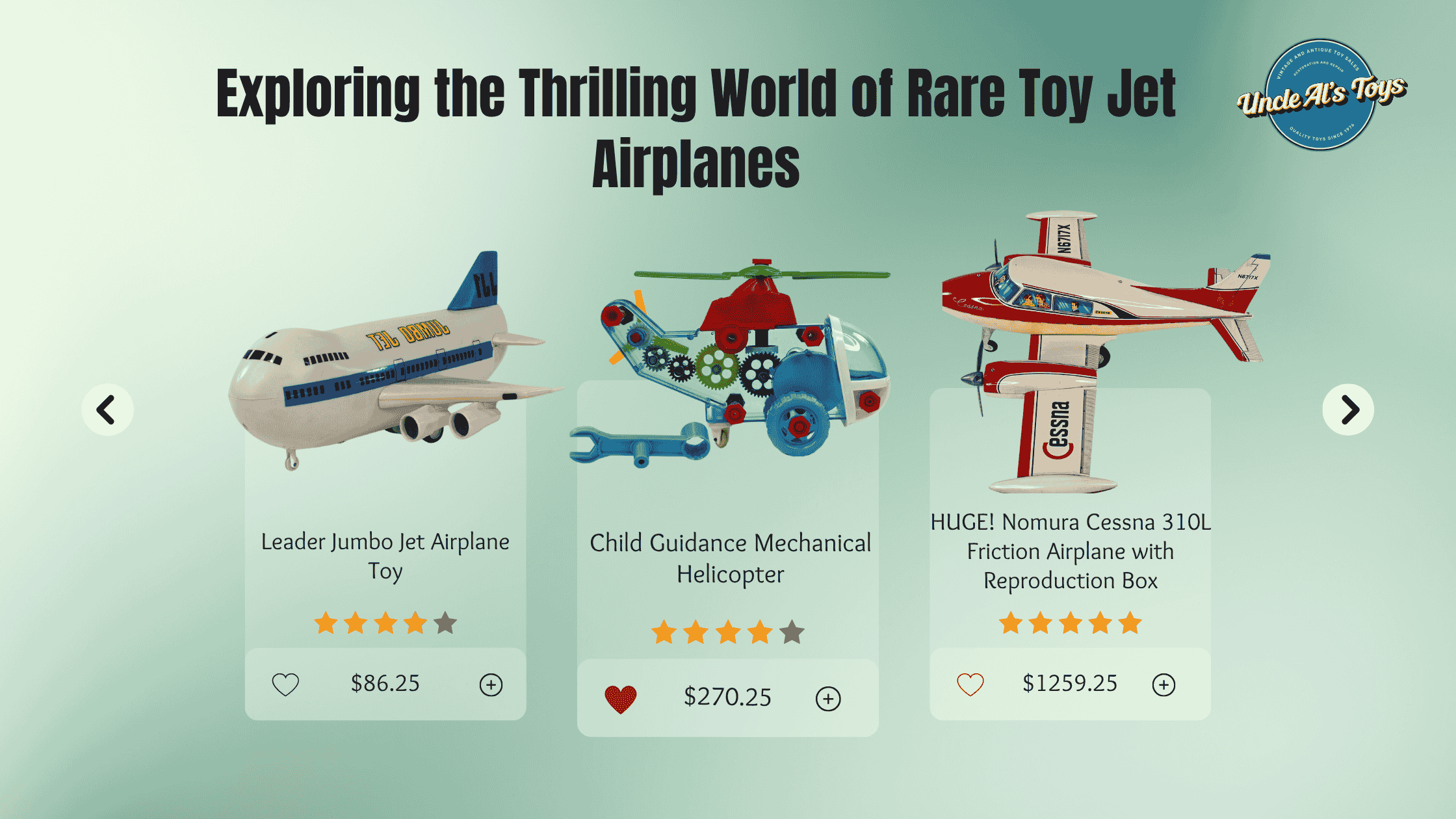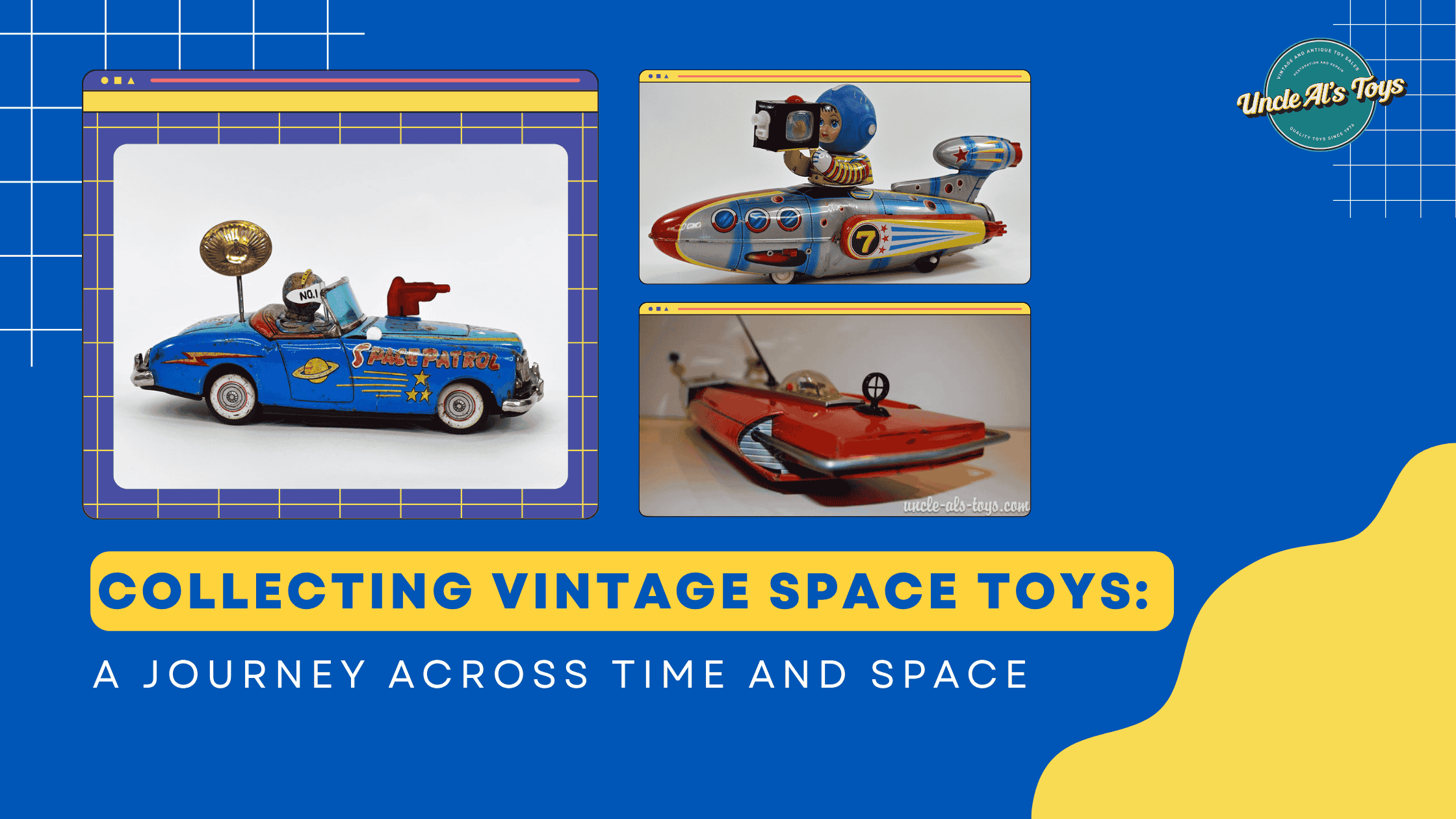From the moment humankind looked toward the stars, astronaut toys have captured our imaginations—and they continue to do so. Whether it’s the simplicity of a plastic astronaut minifigure, the allure of a fully articulated classic astronaut, or the detailed realism of advanced astronaut figures, these space-themed playthings hold a timeless fascination for all ages.
Why Astronaut Toys Endure
space toys combine childhood wonder, space exploration, and creativity into one compact package. The moment vintage toy collectors spot an astronaut figure, it often sparks a wave of nostalgia and fascination with the golden era of space exploration. The charm lies in their simplicity: an astronaut minifigure, a classic astronaut, or a modern-day astronaut figure evokes instant adventure. These toys endure because they fuel storytelling and reflect our collective love of space.
The Early Days: Vintage Astronaut Toys
The earliest Rocket man toys emerged in the late 1950s and early 1960s, at the dawn of the space race. Brands like Marx and Ideal Novelty offered pressed‑steel vintage astronaut toys in muted colors and sturdy designs. These vehicles and figures sparked imagination and inspired generations. Families passed down heirloom astronaut figures, teaching history and nostalgia side by side.
What Defines a Classic Astronaut Toy?
- Retro design elements — metallic finishes, NASA logos, and tube‑helmet aesthetics.
- Simple articulation — just enough movement in limbs and head to act out missions.
- Iconic color palettes — white, orange, silver, and vivid space suit details.
- Timeless appeal — toys that look as magical today as they did decades ago.
The Rise of the Astronaut Minifigure
The introduction of collectible astronaut minifigure sets marked a new era. Compact and customizable, astronaut minifigures became synonymous with LEGO and other brick brands. You loved assembling space bases with these tiny space heroes, while toy collectors sought rare helmet types and suit prints. The astronaut minifigure turned playtime into a franchise-level obsession, with new lines and exclusive figures released regularly.
Beyond Minifigures: Detailed Astronaut Figures
While astronaut minifigures reigned in the 1980s and 1990s, the 2000s saw a shift toward more detailed and articulated astronaut figures. High-end collectible lines introduced realistic facial sculpts, EVA suits, and ISS‑style backpacks. The market now offers toys collector astronaut toy lines that rival action figures in quality—complete with display stands and mission‑specific gear.
Categories of Astronaut Toys
- Retro Pressed Tin and Plastic Space Toys
These vintage space figures embody mid-century style. Heavy and durable, they often feature friction wheels, wind-up mechanisms, or battery-operated functions like moving parts or blinking lights.
- Classic Astronaut Action Figures
1970s-era figures like Ideal’s “Space Man” and early Hasbro sets offered molded plastic limbs and articulated heads, shoulders, and hips.
- LEGO Style Astronaut Minifigure Sets
Including standard white suit models, spaceship builds, and collectible helmet variants.
- Modern Toy Collector Astronaut Figures
Detailed 1:6 scale figures with realistic gear, from brands like Hot Toys and Medicom.
- Space Toy Playsets
Base camps, rockets, rovers, plus astronaut toys to crew them—all designed for imaginative storytelling.
Play Value and Educational Benefits
- STEM Learning: Playing with astronaut toys introduces basic science and space exploration concepts for young minds.
- Fine Motor Skills: Assembling a base or docking vehicles enhances coordination with astronaut minifigure manipulation.
- Storytelling and Imagination: Vintage astronaut toys ignite creative scenarios—epic missions, space rivalries, and nostalgic adventures—bringing back the thrill of childhood play with an adult appreciation for design and detail.
- History Connection: Collecting vintage astronaut toys connects families to the 1960‑70s Space Race era.
Notable Astronaut Toy Lines Through the Decades
1. 1950s–60s: Vintage Astronaut Toys
- Marx Ride-On Astronaut: A classic wind‑up toy with stylized helmet and jointed limbs.
- Ideal Space Man Figure: One of the first plastic classic astronaut figures, featuring molded suit and hinged joints.
2. 1970s–80s: Classic Collector Astronaut Figures
- Kenner Space Figures: With retro space suit prints and flexible limbs.
- Marx Lunar Explorer Sets: Moon base playsets brimming with Space figure and vehicles.
3. 1990s–2000s: Astronaut Minifigure Boom
- LEGO “Exploriens” Series: Introducing LEGO’s official astronaut minifigure sets.
- Mega Bloks Space: Another major player bringing astronaut minifigures to the forefront of toy aisles.
4. 2010s–Present: High-End Astronaut Figures
- Hot Toys Apollo 11 Astronauts: Highly detailed 1/6 scale astronaut figures complete with textured suits and accurate accessories.
- Madelman Marciano Astronaut: Spanish classic; vintage‑style astronaut figures with period detail.
Collecting and Restoring Astronaut Toys
Enthusiasts and dealers consider astronaut toys among the most collectible toy categories. Vintage pieces in good condition fetch top prices, while rare helmet colors and prototype models can command a premium. Restoration—including repainting, helmet replacement, or joint repair—helps breathe life into space toys and often increases value.
Building a Collection of Astronaut Toys
- Start Small: Begin with an astronaut minifigure or affordable classic astronaut toy.
- Research Price Ranges: Know what a mint-condition Hasbro 1960s figure goes for, and compare with sealed LEGO minifigures.
- Preservation: Keep fragile elements—like rubber hose/connectors—away from heat and sunlight.
- Join Collector Communities: Online forums and Facebook groups share tips for caring and trading astronaut figures.
Ghosts of the Past: Rare Astronaut Toys
- Prototype Silver Suit Astronaut Minifig: A rare find once thought lost.
- Monogram Pressed Tin and Plastic Deep-Space Explorer: A vintage astronaut toy that rarely surfaces at fairs.
- 1969 Eagle Lunar Module Playset: Complete with original Space figure —a dream find for serious toy collectors.
Space Toy Innovations: Where Space figure Go Next
- Augmented Reality Integration
Some modern space toys now sync with smartphone apps to simulate helmet‑HUD displays. - LEGO Micro‑Astronaut Minifigure Capsules
New blind‑bag series offer micro‑ sized astronaut figures and mini helmets. - 3D‑Printed Customization
Hobbyists 3D‑print new helmet styles, EVA backpacks, and mission filters for classic figures. - Blockchain Provenance
Secure authentication of rare toy collector astronaut toy items via digital certificates.
Why Astronaut Toys Appeal Across Generations
- Shared History: From grandparents who watched Apollo 11 land, to grandkids playing astronaut minifigures now, these toys link generations.
- Imagination Fuel: The blank-canvas nature of astronaut figures makes them perfect tools for story creation.
- Aesthetic and Technical Craft: Vintage metal toys offer weight; modern astronaut figures deliver detail. Each era offers something different.
Caring for Your Astronaut Toys
Owning astronaut toys—whether vintage collectibles or modern astronaut minifigures—is not just about display and nostalgia; it’s also about proper care to ensure your treasures stand the test of time. From delicate wind-up spacemen to detailed astronaut action figures, each toy deserves thoughtful attention. Here’s how to keep your space toys in top condition for years to come.
1. Store in a Climate-Controlled Environment
Temperature and humidity are two of the biggest enemies of collectible toys. Astronaut toys, especially those made from vintage materials like early plastics or tin, are susceptible to warping, fading, and corrosion if left in unsuitable conditions. Always store your toys in a room with stable, moderate temperatures—ideally between 60°F and 75°F. Avoid attics, basements, or garages where heat, cold, or dampness can cause irreversible damage. A climate-controlled cabinet or display case offers excellent protection, especially for high-value or fragile items.
2. Protect from Direct Sunlight and UV Exposure
Whether it’s a sealed astronaut minifigure or a rare metal space explorer, ultraviolet light can fade colors and weaken materials over time. Display your toys away from windows or use UV-filtering glass in display cases. Even a short period of exposure to direct sunlight can cause decals to peel or plastic parts to yellow, especially with vintage astronaut figures.
3. Preserve Boxes, Instructions, and Packaging
Toy Collectors know that the value of astronaut toys can increase significantly when original boxes, instruction sheets, or promotional inserts are preserved. For astronaut minifigure sets and playsets, keep all parts together. Store packaging flat or upright in acid-free plastic sleeves or archival boxes to avoid creasing or deterioration. A complete item—figure, accessories, and box—can sometimes double or triple in value compared to a loose one.
4. Gentle Cleaning Is Key
Dust and grime can accumulate quickly on astronaut toys, especially those displayed in open air. For plastic astronaut figures or minifigures, use a soft brush or cotton swab dipped in a mild soap-and-water solution to clean gently. Avoid soaking the toy or using abrasive cleaners, which can damage paint, decals, and joints. Always test cleaning solutions on a small, hidden area before full application. For high-end figures with cloth or rubber components, consult a specialist or use extra care.
5. Maintain Moving Parts on Vintage Toys
Older astronaut toys, especially those with wind-up, friction, or battery-operated mechanisms, may require light maintenance. For wind-up and friction toys, apply a micro-dose of sewing machine oil or specialized metal lubricant to keep gears and joints functional. For battery-operated toys, ensure terminals are clean and free from corrosion, and always remove old batteries to prevent leakage. Avoid over-lubricating any type of mechanism, as excess oil can attract dust or damage painted surfaces. For rare or delicate features—especially motorized or light-up components—consult a professional toy restorer before attempting repairs.
By following these simple yet essential care tips, you can preserve the beauty, function, and value of your astronaut toys for future generations. Whether they’re cherished childhood keepsakes or investment-grade collectibles, every figure deserves its place among the stars—in pristine condition.
Final Thoughts
From chunky pressed-steel vintage space toys and nostalgic classic astronaut figures of the 1970s to modern astronaut minifigures and museum-quality astronaut figures, these toys chronicle our journey to the stars. Their charm lies not only in their appearance but in the stories they help us tell—of exploration, risk, triumph, and hope.
Whether you’re a youngster placing an astronaut toy beside your bed, a nostalgic adult dusting off an old minifigure, or a serious collector handling silver-scale astronaut figures, there’s always something magical about these space companions.
So, reach for the stars—and for that box of astronaut toys waiting at the back of your closet. Prepare for infinite missions, boundless storytelling, and collectible joy spanning generations. These timeless icons remind us that every dream, no matter how far, starts with a single step—or a toy astronaut on a shelf.
Frequently Asked Questions – FAQs
-
What defines an astronaut toy vs spaceship toy?
An astronaut toy focuses on the human figure and suit design, while spaceship toys are vehicles. Combining both lets you recreate liftoffs, EVA missions, and touchdowns.
-
Are astronaut minifigures worth collecting?
Yes! Limited editions and rare helmet styles can become highly collectible, especially sealed in packaging.
-
Where can I find parts to restore old astronaut toys?
Specialized online stores offer vintage astronaut toy parts—helmets, arms, paint replicas—ensuring longevity for your collection.
-
Do collector astronaut toys cost more than classic astronaut toys?
Generally yes, because of detail, articulation, licensing fees, and limited production. Vintage and modern collector lines often fetch higher prices.

